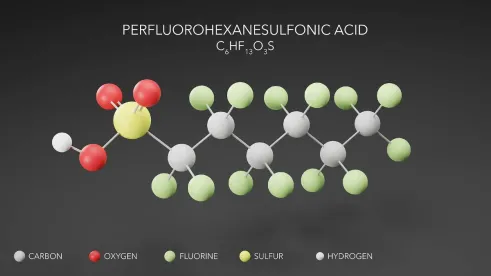Everyone from Bloomberg to CNN to the Boston Globe is reporting today on US Geologic Survey research concluding that "nearly half" (45 percent to be precise) of US drinking water sources contain detectable concentrations of the two most common chemicals known collectively as PFAS.
You have to get to the ends of some but not all of the reports to find that EPA's proposed drinking water standard of no more than four parts per trillion for PFOA, the more often detected PFAS, was exceeded in only 6.7 percent of the drinking water sources studied.
Now, I don't mean to suggest that it isn't a big deal that "nearly" seven percent of the drinking water sources studied contain PFAS at concentrations greater than those EPA now believes to be safe but that's a lot different than "nearly half".
Since it is only in the past few years that anyone has been seriously concerned about PFAS (EPA's PFAS road map is still less than two years old), and PFAS are still used in countless products (as they have since World War II), and there is a reason we call them "forever chemicals", is it really surprising that we're finding them in our water? Frankly I was surprised to see that they're only present at concentrations concerning to EPA in 6.7 percent of the drinking water sources evaluated.
Which brings me to the great physician Paracelsus who, nearly five hundred years ago, is credited with saying something like "only the dose makes the poison" (see https://www.lexology.com/library/detail.aspx?g=bb2b9d01-4b18-494b-abf4-bdada67562ca). What Paracelsus meant, in modern terms, is that when one can detect something like PFAS in parts per quadrillion, as we now can, the detection of that thing at such a minute concentration isn't the same thing as it being an environmental concern.
EPA says that a concentration of certain PFAS in drinking water greater than four parts per trillion (4 drops in an Olympic Swimming Pool), and not less, is what should concern us. That judgment will most certainly be litigated but for now we should give EPA the benefit of the doubt.
Achieving that standard is going to cost billions of dollars. Several of those billions have already been appropriated by Congress. Many billions more are being paid by the companies that manufacture PFAS. More billions will be paid by others legally responsible for PFAS being in the environment. Some of the cost will be borne by state and local governments, and all of us.
We should see that all of us have safe drinking water as soon as humanly possible, whatever the cost. But eliminating merely detectable concentrations of PFAS from our environment is most certainly beyond our capacity and headlines creating fear over doing anything but that serve no one.
The EPA’s proposed limits for PFOS were below the detection abilities of two of the three laboratories the USGS scientists used to detect the substances in the drinking water samples included in the study. The study authors said that their estimates of samples exceeding the proposed maximum contaminant limit “should be considered conservative.” The proposed limits for PFOA were exceeded in 6.7% of the tap water samples in the study, and the limits for PFOS were exceeded in 4.2%.




 />i
/>i

